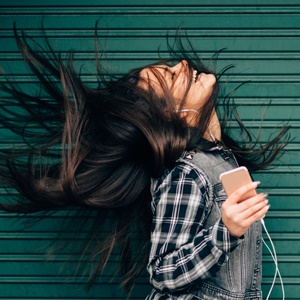
Teens who use MP3 players are putting their hearing at risk and taking few precautions to protect their hearing, a new study in the journalPaediatrics shows.
Given how tough it is to change teens' behaviour, "it is our opinion that (governmental) authorities, the music industry in general, and especially manufacturers of MP3 players and of earphones should recognize their responsibility and create a safer MP3-listening environment by taking measures that will protect today's youth against the dangers of listening to high-volume music on MP3 players," principal investigator Dr Hein Raat said.
The top volume on MP3 players is around 100 decibels (dBA), and listening to music at this volume for more than just 15 minutes at a time can cause permanent hearing damage. While safety standards have long been in place for industrial noise (for example, how long a worker can be exposed to a certain level of sound on the factory floor), there are no standards to protect the ears of young MP3 users.
To understand how often young people took measures to protect their hearing while listening to MP3 players, as well as how frequently they took risks, Raat, of Erasmus Medical Centre in Rotterdam, and his team surveyed 1 687 boys and girls 12 to 19 years old attending Dutch secondary school.
What the study found
Ninety percent used MP3s to listen to music, while about 93% of the MP3 users listened to music with ear bud earphones - which are about five decibels louder than over-the-ear listening devices.
About one third of the MP3 users listened to music on the players frequently, and 48% listened to music at high volumes, defined as more than 75% volume.
Fewer than 7% used a noise limiter on their MP3 or turned down the volume after listening for a while, while just about 18% said they took breaks during listening or paid attention to warnings about the risks of listening to loud music.
Parents who want to protect their child's ears should have them set the volume of their MP3 players no higher than 60% if the child is using ear buds, and no more than 70% if he or she is using over-the-ear devices, Raat said.
Also, he added, any time a child reports ringing in the ear, muffled hearing or hearing loss, the child should be told to lower the volume.
Governments should take responsibility
But while parents can help protect their child's hearing, the researcher said, the issue of noise levels and hearing loss is extremely complex; for example, every three-point decibel increase in sound halves the amount of safe listening time.
Given this complexity, according to Raat, the responsibility for protecting children's ears should lie ultimately with government authorities and industry.
"In the western world, workers are extensively protected to the potential dangers of high volume (industrial) noise," Raat noted. "Currently, young people, generally minors, are not protected in any way against the potential dangers of high volume music. We recommend taking action to change this." – (Reuters Health, May 2009)
Read more:
Pill may save hearing
Headphones bad for pacemakers




 Publications
Publications
 Partners
Partners















